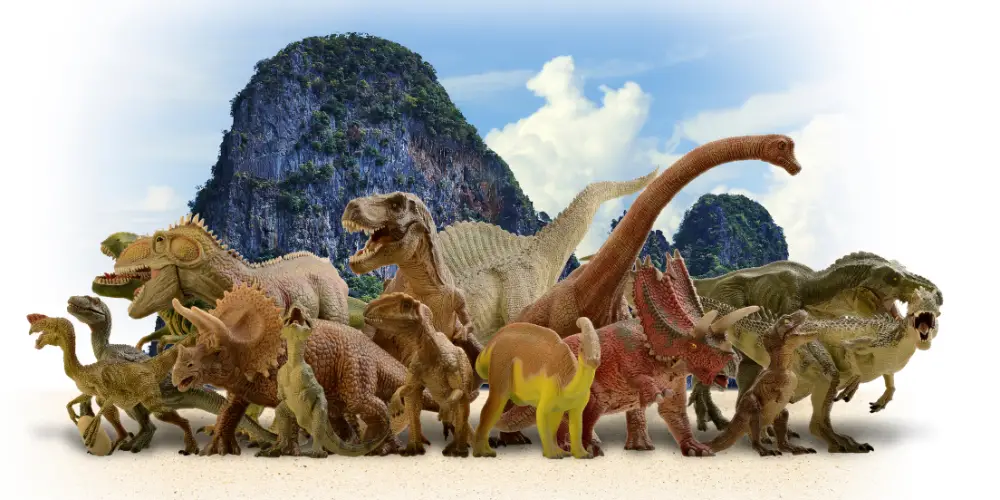What was the smartest dinosaur, you ask?
The Troodon is considered the smartest dinosaur due to its large brain-to-body ratio, indicating advanced cognitive and sensory abilities. Its keen senses, problem-solving skills, and evidence of social behaviors and parental care support its status as the most intelligent dinosaur.
Dive in with us as we journey back in time to explore the life of the Troodon, unveiling the mysteries and wonders of the most intelligent dinosaur to have walked the Earth!
Key Takeaways
- The Troodon is considered the smartest dinosaur due to its large brain-to-body ratio, indicating advanced cognitive and sensory abilities.
- Intelligence in dinosaurs is often inferred from behaviors and anatomical features, with the Encephalization Quotient (EQ) used as a measure of intelligence.
- Paleontologists face challenges in studying dinosaur intelligence due to the inability to observe behavior directly and the lack of fossilized brain tissue.
- Other dinosaurs like Velociraptor and Deinonychus also exhibited signs of high intelligence, as evidenced by their hunting strategies and social behaviors.
- Some herbivorous dinosaurs like Stegosaurus and Euoplocephalus showed indications of strong cognition despite having smaller brains.
- Aquatic and avian dinosaurs like Ichthyosaurs and Pterosaurs developed large brains, possibly indicating high intelligence.
- Evidence of parental care and social structures in some dinosaurs implies advanced cognitive abilities.
- There is no definitive evidence of tool use or problem-solving skills in dinosaurs, but the possibility cannot be ruled out.
- Environmental conditions and selective pressures in the Mesozoic Era played a crucial role in shaping the intelligence of dinosaurs.
- There are ongoing debates and unresolved questions regarding the extent of dinosaur intelligence, requiring better evidence and analytical techniques for resolution.
Understanding Dinosaur Intelligence
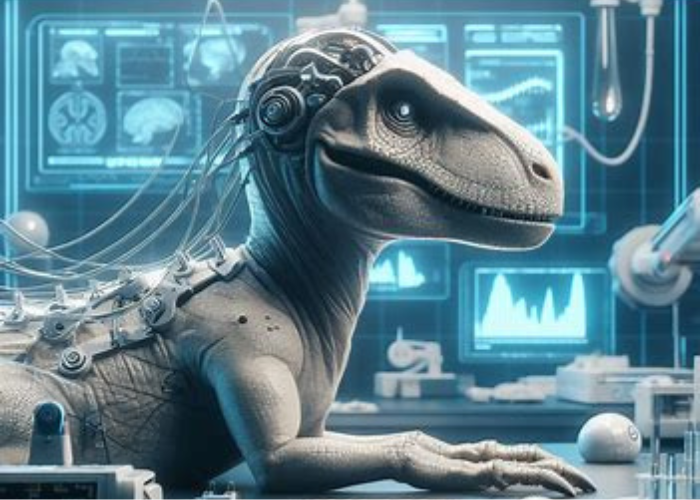
Defining Intelligence in Dinosaurs
Intelligence in animals, including dinosaurs, is often inferred from behaviors and anatomical features.
In dinosaurs, the Encephalization Quotient (EQ)—a measure of brain size relative to body size—is used as a proxy for intelligence. A higher EQ suggests advanced cognitive abilities, such as problem-solving and learning.
Criteria for Measuring Intelligence

Paleontologists use several lines of evidence to estimate intelligence levels in dinosaurs:
- Brain-to-body mass ratios – Comparing brain size to body size gives a rough measure of intelligence. Larger ratios suggest greater intelligence.
- Niche and behavior – More complex niches and behaviors may indicate higher cognitive abilities. Examples are pack hunting, parental care, or use of tools/problem-solving.
- Sense organs – Sensory capabilities influence intelligence. Evidence of good vision, smell, hearing, and balance point to higher cognition.
- Brain structures – Endocasts of brain cavities provide insight into regions associated with intelligence, like the forebrain.
However, we cannot directly observe dinosaur behavior or administer intelligence tests. Reconstructing brain power from fossils has limitations.
Challenges in Studying Dinosaur Intelligence

Studying intelligence in long-extinct creatures has inherent difficulties:
- Brain tissue does not fossilize, so we rely on endocasts and skull cavities. These provide an incomplete picture.
- Behavior does not fossilize, so we can only hypothesize on behaviors suggesting intelligence.
- Comparing extinct and modern animals is imprecise. For example, some birds are very intelligent with small brains.
- Intelligence is complex and cannot be easily quantified from fossils alone. There are few widely accepted methods.
- Conditions and environments in the prehistoric world were vastly different from today, potentially shaping dinosaur cognition in elusive ways.
The Smartest Dinosaur: Troodon
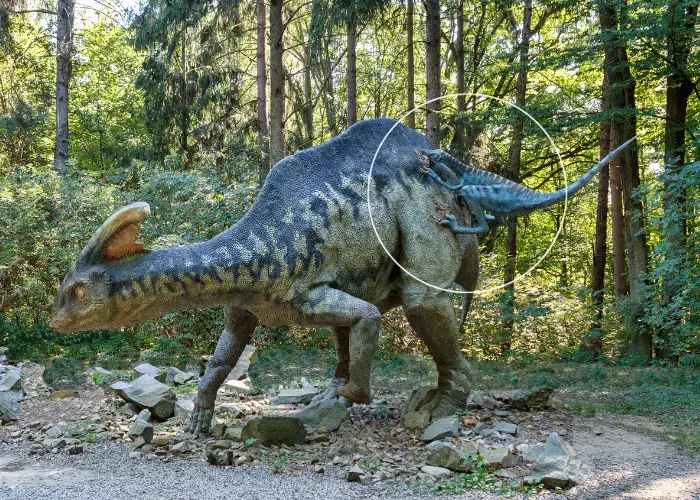
Unique Features and Behaviors
The dinosaur believed to have the highest intelligence is Troodon. It had:
- The largest brain-to-body ratio of any dinosaur, comparable to modern birds and mammals.
- Binocular vision and depth perception suggesting advanced hunting skills.
- Evidence of semi-manipulative forelimbs perhaps used to grasp prey or objects.
- Possible social behaviors and parental care implied by nesting sites and groups of juveniles.
Its intelligence may have enabled complex hunting strategies and behaviors.
Comparative Analysis with Other Dinosaurs
| Comparative Feature | Troodon | Stegosaurus | Triceratops | Velociraptors |
|---|---|---|---|---|
| Brain Size Relative to Body Size | 5-6 times larger | Significantly smaller | Not Applicable | Not Applicable |
| Olfactory Bulbs (Sense of Smell) | Larger, good for finding prey | Not Specified | Not Specified | Not Specified |
| Vision | Stereoscopic, much better | Not Specified | Less developed | Not Specified |
| Forelimbs | More nimble, possibly for tool use | Not Specified | Not Specified | Less nimble |
Intelligence in Other Dinosaurs
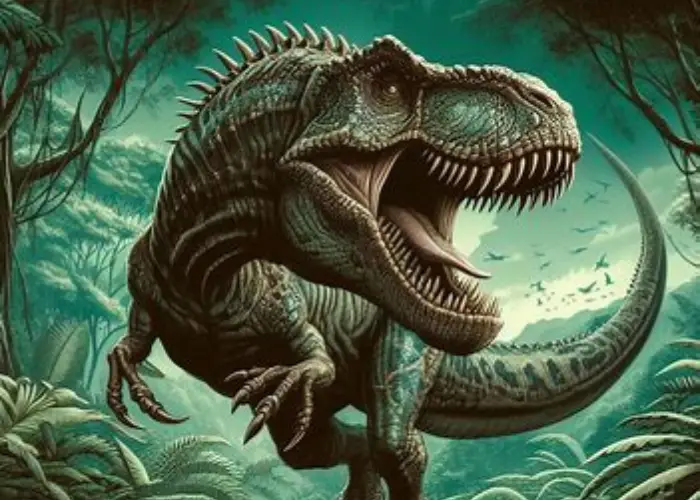
Intelligent Carnivores
Other carnivorous dinosaurs with high estimated intelligence include:
- Velociraptor – Pack hunter with a large brain and forward-facing binocular vision.
- Deinonychus – Also hunted in packs and showed signs of coordinated attack strategies.
- Utahraptor – One of the largest raptors with a relatively big brain for its size.
Pack hunting in particular is seen as evidence of increased intelligence and coordination.
Brainy Herbivores
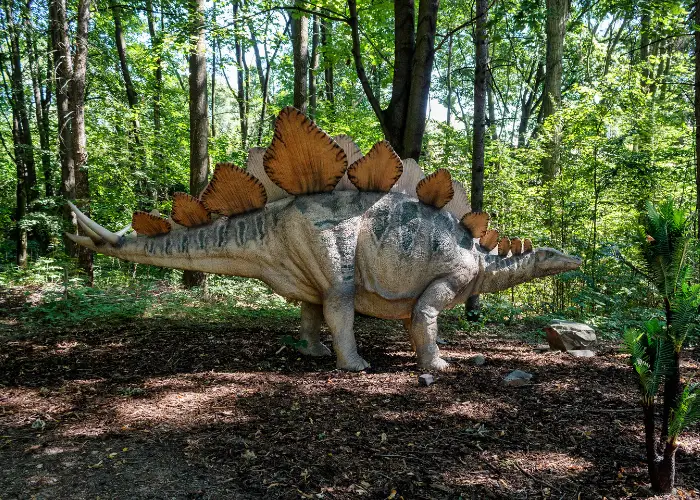
Herbivorous dinosaurs with indications of strong cognition include:
- Stegosaurus – Despite a small brain, may have used its distinctive plates and spiked tail in complex defensive strategies.
- Euoplocephalus – Also had bony armor and likely effective defenses, implying advanced cognition.
- Sauropods – Their enormous size requires intelligence to coordinate their bodies and survive to adulthood.
Aquatic and Avian Intellects
Among marine and flying dinosaurs:
- Ichthyosaurs: Possessed large brains and possibly exhibited high intelligence compared to other marine reptiles of their time.
- Pterosaurs: Developed substantial brains, likely aiding in controlling flight and possibly possessing strong visual processing capabilities.
- Archaeopteryx: Demonstrated bird-like intelligence comparable to that of modern birds.
Behavioral Indicators of Intelligence
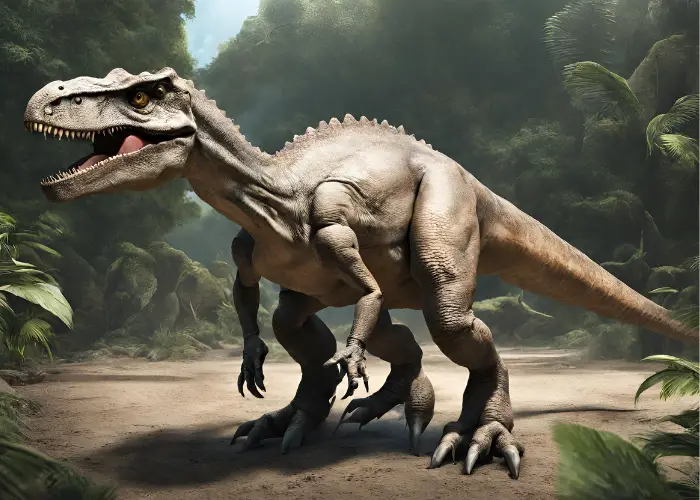
Parental Care
Nesting sites and groups of juveniles suggest some dinosaurs cared for their young, implying intelligence:
- Protoceratops may have protected eggs in nesting colonies.
- Citipati remains were found brooding on nests, similar to modern birds.
- Maiasaura possibly tended their young in large groups for extended periods.
Social Structures and Communication
Evidence of complex social behaviors includes:
- Herding in hadrosaurs like Parasaurolophus.
- Possible use of distinctive crests and horns in communication.
- Display structures like plates on Stegosaurus may have been for signaling.
Tool Use and Problem Solving
No definitive evidence exists of tool use or problem-solving skills, but some possibilities:
- Ankylosaurs may have used tail clubs as tools in defense.
- Raptors like Troodon may have used forelimbs to manipulate objects.
- Tyrannosaurs could have used their jaws as tools to pry, hold, and break objects.
Comparative Analysis with Modern Animals
| Comparative Feature | Troodon | Velociraptors | Tyrannosaurs | Stegosaurus |
|---|---|---|---|---|
| Intelligence Level | Approaching ravens and crows | Likely as smart as dolphins | Comparable to chimpanzees | Closer to reptiles |
| Hunting/Behavioral Comparison | Not Applicable | Hunt in coordinated packs | Not Applicable | Not Applicable |
| Brainpower Comparison | Not Specified | Not Specified | Big brains | Lower, reptilian |
Impact of Environmental Factors on Intelligence
The environments and pressures dinosaurs lived under influenced their intelligence development in key ways:
- Finding food and avoiding predators were strong motivators for increased intelligence.
- Social species evolved more complex behaviors and cognition than solitary ones.
- Changing ecosystems requires adaptation and new survival strategies.
- Flight and swimming led to intelligence gains in pterosaurs and marine dinosaurs.
- The Mesozoic Era landscape posed challenges, including scarce resources that drove cognition growth.
Dinosaurs faced unique environmental conditions and selective pressures compared to modern animals, shaping their mental capacities.
Common Misconceptions
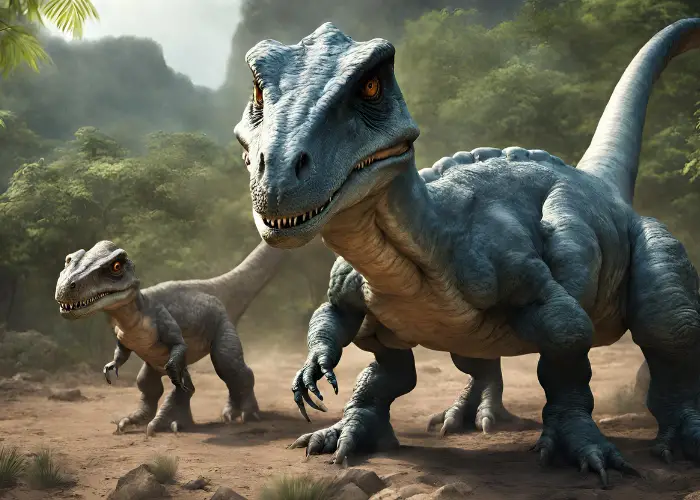
There are several misconceptions about dinosaur intelligence:
- All dinosaurs were unintelligent brutes: This is inaccurate, as some dinosaurs like Troodon exhibited signs of high intelligence, as evidenced by their behaviors and anatomical features.
- Dinosaurs had primitive reptile brains: Some dinosaurs had advanced brain structures that go beyond what is typically seen in reptiles, suggesting higher cognitive abilities.
- Large dinosaurs were more intelligent than small ones: Size does not necessarily correlate with intelligence. Some smaller dinosaurs displayed signs of high intelligence, while larger ones did not.
- Only mammals possess high intelligence: Modern birds, which share a common ancestry with dinosaurs, demonstrate high levels of intelligence, suggesting that high intelligence is not exclusive to mammals.
These misconceptions underscore the importance of ongoing research to understand dinosaurs’ cognitive abilities better and dispel inaccuracies surrounding their intelligence.
Ongoing Debates and Unresolved Questions
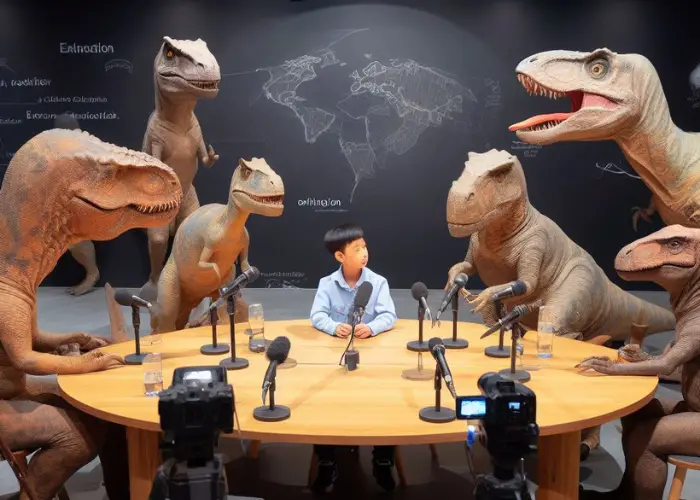
Many open questions remain regarding dinosaur intelligence:
- Did any dinosaurs rival mammals or birds in intelligence? Some scientists think so, while others argue their cognition remains limited.
- Is intelligence underestimated in dinosaurs with small brains but complex behavior like Stegosaurus? The relationship between brain size and behavior is still unclear.
- Could non-avian dinosaurs vocalize or communicate beyond visual displays? The extent of their communication abilities remains speculative.
- Did dinosaurs use tools or solve problems flexibly? There is little evidence but the possibility cannot be ruled out.
Better evidence and analytical techniques are needed to address these debates.
More fossils could clarify brain structures and behavior. We may never fully know how intelligent dinosaurs were compared to other animals.
Conclusion
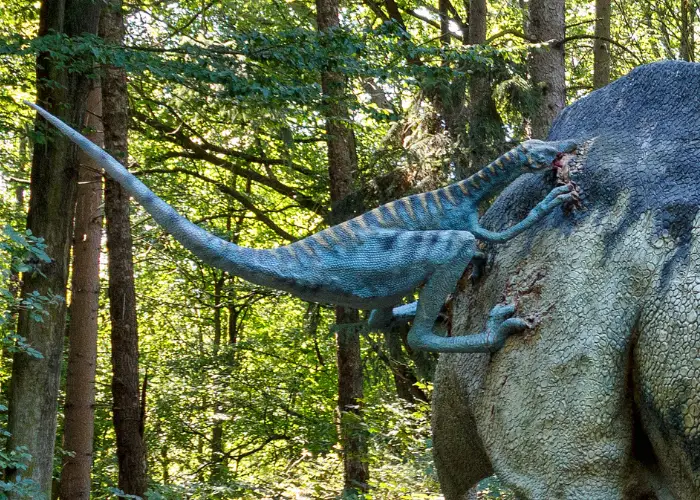
While establishing definitive intelligence levels is difficult, dinosaurs like Troodon provide evidence of high cognitive abilities through their large brains, sensory capabilities, and complex behaviors.
Environmental and social pressures influenced the intelligence of certain dinosaur groups.
There are still many open questions and theories to uncover the true nature of dinosaur cognition that future research aims to resolve.
Even with limitations, exploring dinosaur intelligence grants us a deeper appreciation of these remarkable prehistoric creatures.
REFERENCES:
- U.S. Geological Survey. (2001, May 17). Which Was the Smartest Dinosaur? USGS Publications Warehouse. https://pubs.usgs.gov/gip/dinosaurs/iq.html
- Clark, L. (2015, November 16). Troodon: The Smartest Dinosaur to Roam the Earth. Florida State University. https://atmos.eoas.fsu.edu/~parker/Clark.pdf
- University of California Museum of Paleontology. (n.d.). Troodontidae. UCMP Berkeley. https://ucmp.berkeley.edu/diapsids/saurischia/troodontidae.html


